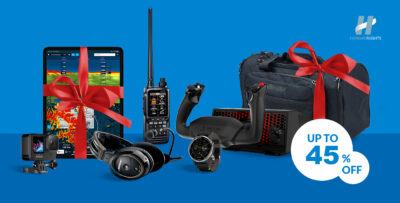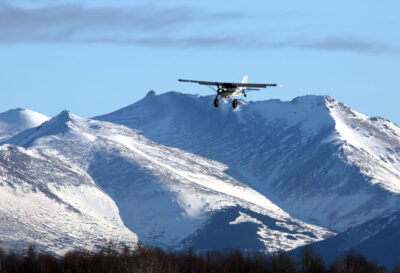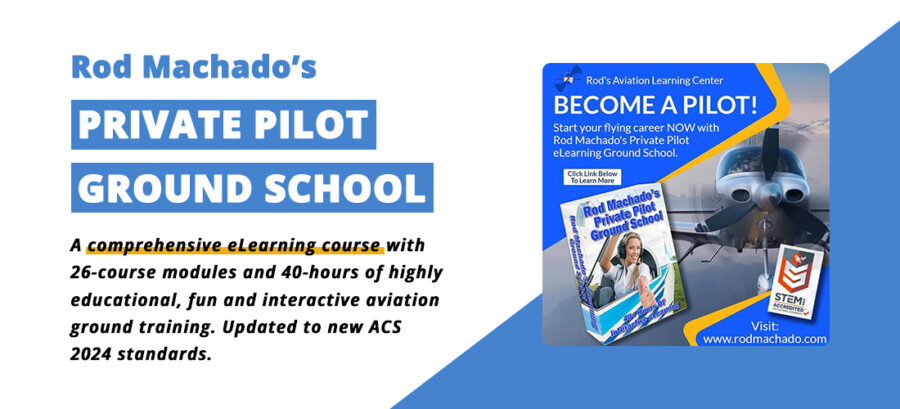What Are Bush Airplanes and What Makes Them Unique?
21 November 2023 | Updated on February 05, 2024
For adventurous pilots, there’s nothing quite like the thrill of bush flying – exploring remote and rugged terrains in a small plane designed for short takeoff and landing (STOL) maneuvers. Bush planes are specifically built for this kind of aviation, with unique design elements and technologies that enable them to operate on short and unprepared runways.
But what is it exactly that sets the best bush planes apart from other aircraft? In this article, we’ll explore the world of bush airplanes and discuss the key features that make them the ideal choice for pilots seeking to venture off the beaten path.
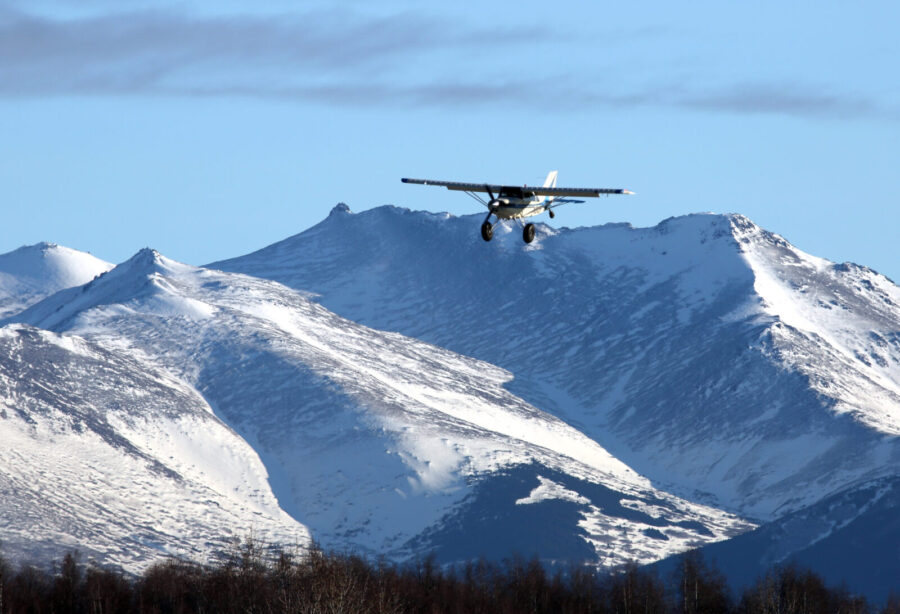
A bush pilot makes a landing at Lake Hood in Anchorage Alaska. The large wheels on the plane give the ability to land on difficult terrain.
Key Takeaways:
- Bush planes are designed for short takeoff and landing (STOL) maneuvers in remote and rugged terrains.
- They have unique features and technologies that enable them to operate on short and unprepared runways.
- The best bush planes are lightweight, have powerful engines, and high lift wings to enhance performance in bush flying scenarios.
- Choosing the right bush plane requires considering factors such as budget, intended use, maintenance, and support availability.
- Mastering the flying techniques and safety considerations for bush flying is crucial for a safe and successful experience.
The Versatility of Bush Airplanes
One of the most attractive features of bush airplanes is their versatility. These aircraft are designed to operate in remote and rugged terrains, making them ideal for bush pilots and adventurous individuals who seek to explore new and challenging destinations. Here are some of the key reasons why bush planes are so versatile:
Short and Unprepared Runways
Bush planes are equipped with special features that allow them to take off and land on short and unprepared runways. These features include:
| Feature | Description |
|---|---|
| STOL | Short Takeoff and Landing capabilities allow bush planes to operate on runways as short as 100-300 feet, or less. |
| High-Lift Wings | Bush planes have specially designed wings that generate greater lift and provide better control at low speeds. This allows them to operate safely on short runways and in confined areas. |
| Tundra Tires | These large, low-pressure tires are designed to handle rough terrain and allow bush planes to land and take off on unprepared surfaces like sand, gravel or snow. |
Robust Construction
Bush planes are built to withstand harsh weather conditions and challenging terrain. They are typically made with lightweight materials such as aluminum and carbon fiber, which provide excellent durability and strength while minimizing weight. This makes them more resistant to damage and better equipped to handle rough landings in difficult conditions.
Powerful Engines
Bush planes are equipped with powerful engines that offer exceptional performance and great speed. These engines are necessary for flying through mountain passes and valleys, where higher horsepower allows for greater control and responsiveness. They typically use aviation-grade fuel and are designed to operate in high-altitude conditions.
Thanks to these and other features, bush planes are among the most versatile aircraft in the world. They offer an unrivaled level of freedom and flexibility for pilots who want to explore remote destinations and challenge themselves in new and exciting ways.
Key Features of the Best Bush Planes
When it comes to choosing the best bush plane for your aviation adventures, there are a few key features that set them apart from other aircraft. These features include:
- Lightweight construction: Bush planes are designed to be lightweight and rugged, allowing them to operate in challenging conditions and take off and land on short, unprepared runways.
- Powerful engines: To handle the demands of bush flying, the best bush planes are equipped with high-performance engines that deliver ample power and speed.
- High lift wings: Bush planes require wings that generate a lot of lift at low speeds, making them ideal for short takeoffs and landings. This is where Short Takeoff and Landing (STOL) capabilities come to the forefront.
- Large tires: Bush planes need tires that can handle rough terrain and provide good traction on dirt, gravel, and other unpaved surfaces.
- Extended range: The best bush planes have long-range capabilities, allowing them to travel further into remote wilderness areas without requiring excessive refueling stops.
- Optional floats and skis: For pilots who want to take their bush flying adventures to the next level, many aircraft models offer optional floats or skis that enable them to take off and land on water or snow.
In addition to these key features, the best bush planes are also equipped with advanced avionics, sophisticated navigation systems, and other tools that make it easier for pilots to navigate, communicate, and maintain their aircraft.
The Cessna 185 is a classic example of a bush plane that embodies many of these features, including lightweight construction, high lift wings, and the flexibility to operate on floats or skis. Other popular bush planes include the Maule M-7, Piper PA-18 Super Cub, and the Aviat Husky.
Investing in the best bush plane for your needs means considering factors such as budget, intended use, and maintenance requirements. It’s important to do your research and choose an aircraft that not only meets your current needs but can also grow with you as your skills and interests evolve.


Learn more
The 11 Best Bush Planes of all Times
Top Manufacturers of Bush Planes
If you’re in the market for a bush plane, it’s important to know the top manufacturers that specialize in this type of aircraft. These companies understand the unique needs and challenges of bush flying and have a reputation for producing some of the best bush planes on the market today.
Cessna
Cessna is a well-known manufacturer of general aviation aircraft, including bush planes. Their line of Skywagon and Stationair models are popular among bush pilots for their versatility and reliability. The Cessna 206 and 208 are excellent options for those looking for a larger aircraft that can handle heavy loads and long-range flights.


Piper
Piper has been producing aircraft since the 1930s and has gained a reputation for quality and innovation. Their line of Super Cub and PA-18 models are popular among bush pilots for their STOL capabilities and rugged design. The Piper PA-18 Super Cub continues to be a top choice for bush pilots around the world.
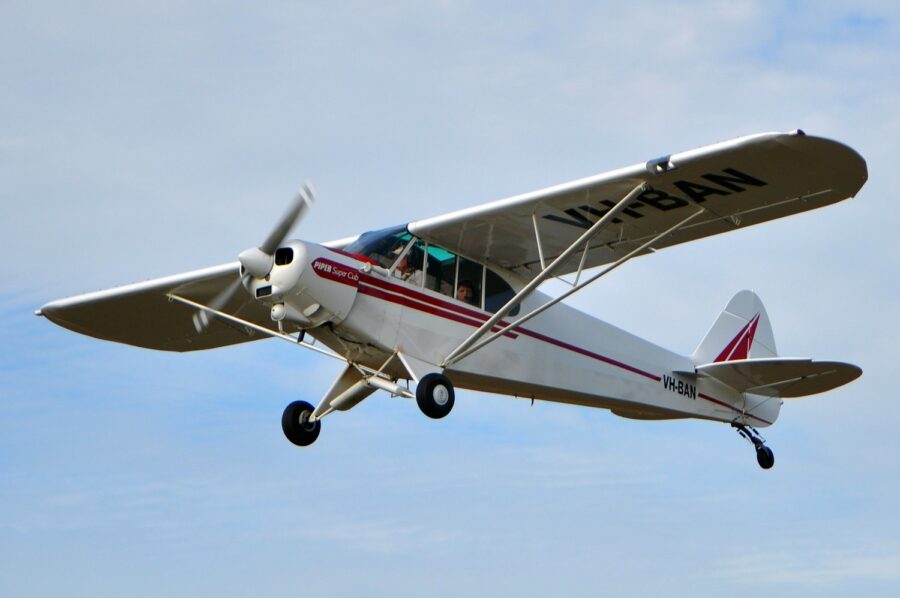

Quest Aircraft
Quest Aircraft was founded in the early 2000s with the goal of producing a modern bush plane that could handle the demands of remote flying. Their Kodiak model has quickly become a favorite among bush pilots for its impressive range and payload capacity. The Quest Kodiak is equipped with the latest technology and safety features to ensure a smooth and secure flying experience.


Aviat
Aviat is a manufacturer based in the United States that specializes in high-performance aircraft, including bush planes. Their line of Husky models is known for its STOL capabilities and rugged design. The Aviat Husky is a popular choice among bush pilots for its ability to handle difficult terrain and unpredictable weather conditions.


Cubcrafters
The Washington-based manufacturer CubCrafters builts backcountry aircraft like the XCub and the highly successful Carbon Cub. The company was founded in 1980 by Jim Richmond, who one day came back from a trip to Alaska, sold his home insulation business and decided to start rebuilding Cubs. CubCrafters was born.
After starting out as a business only rebuilding and modifying existing Cubs, the company later moved to building and certifying its own aircraft. With the FAA introducing the new Light Sport Aircraft class, CubCrafters introduced its 100 hp Sport Cub and later the 180 hp Carbon Cub SS.


Learn more
Boys and Their Toys: The CubCrafters XCub
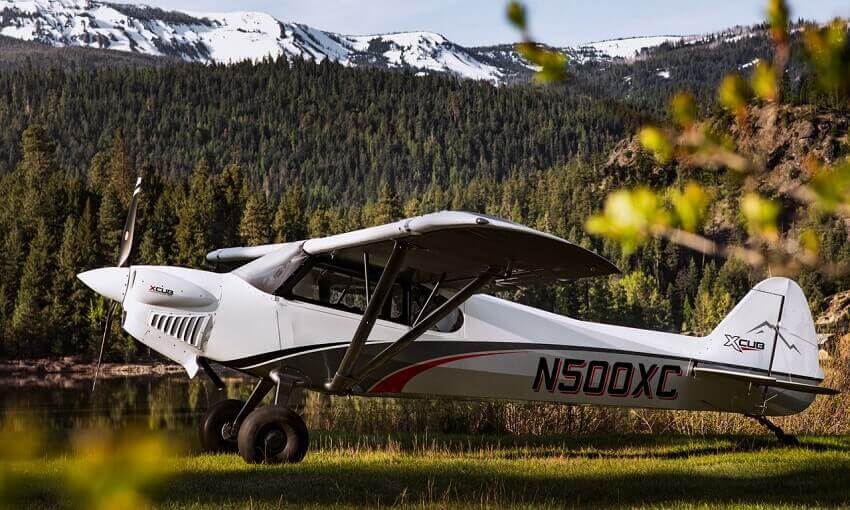

The Best Bush Planes for Remote Expeditions
When it comes to remote expeditions, having the right bush plane can make all the difference. The best bush planes for exploring untouched wilderness are as versatile as they are reliable, capable of carrying a significant payload while still operating on short and unprepared runways. Below, we have highlighted some of the best bush planes for remote expeditions:
| Plane Model | Range | Fuel Capacity | Payload Capacity | Additional Features |
|---|---|---|---|---|
| Cessna 180 | 800 miles | 65 gallons | 950 lbs | STOL capabilities, excellent maneuverability |
| Pilatus PC-6 Porter | 900 miles | 80 gallons | 2,646 lbs | Large cargo door, roomy cabin, fast climb rate |
| De Havilland Beaver | 800 miles | 84 gallons | 1,200 lbs | STOL capabilities, excellent floatplane conversion kit |
These bush planes offer a range of capabilities suitable for various remote expeditions. For longer trips, the Pilatus PC-6 Porter offers greater range and payload capacity, while the Cessna 180 and De Havilland Beaver are excellent choices for shorter trips or when operating in more challenging terrain.
However, it’s important to note that the best bush plane for a specific expedition depends on the intended use, destination, and other factors. Before selecting a bush plane, carefully consider your needs and consult with experienced pilots and aviation experts.
Finally, it’s worth investing in additional features that can increase the capabilities and comfort of your bush plane, such as long-range fuel tanks, cargo adaptations, and advanced avionics.
Safety Considerations for Bush Flying
Bush flying can be an exhilarating and rewarding experience, but it also comes with unique safety concerns that must be taken seriously. As a bush pilot, your safety, and that of your passengers, should always be your top priority.
Weather Monitoring
Weather conditions can change quickly in remote areas, making it essential to stay up-to-date on the latest forecasts and updates. Before each flight, ensure you have checked multiple weather sources and have a clear understanding of any potential hazards, such as thunderstorms or high winds.
Emergency Equipment
When flying in remote areas, it’s crucial to have emergency equipment on board. This includes a first aid kit, emergency locator transmitter (ELT), and survival equipment such as blankets, water, and food. Ensure you are familiar with how to use all equipment and have it easily accessible in case of an emergency.
Survival Training
As a bush pilot, it’s essential to have survival training and skills to handle emergency situations. This can include knowledge of wilderness first aid, navigation, and survival techniques such as building a shelter or starting a fire.
Pre-Flight Inspections
Before every flight, conduct a thorough pre-flight inspection to ensure your aircraft is in good working condition. This includes checking fuel levels, tires, and all engine components. It’s also essential to check for any signs of damage, such as cracks or corrosion, that could affect the aircraft’s performance.
Proper Training and Certification
To fly a bush plane safely, it’s essential to have the proper training and certification. This includes a commercial pilot’s license and a minimum number of flight hours, along with specialized training in bush flying techniques and safety procedures.
By following these safety considerations and procedures, you can minimize the risks associated with bush flying and enjoy a safe and successful adventure in the air.
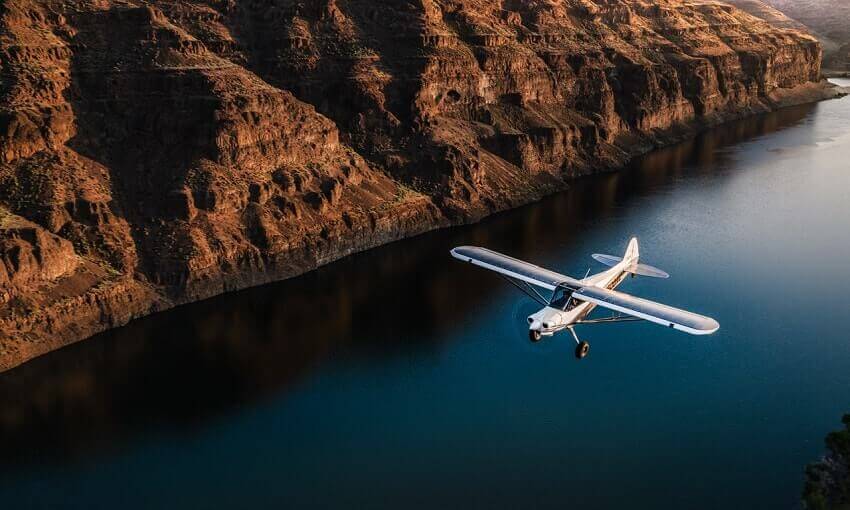

Tips for Choosing the Best Bush Plane
Choosing the right bush plane can make all the difference in the success of your bush flying adventures. Consider these tips when making your decision:
Budget
The cost of a bush plane can vary greatly depending on the model and features. Determine your budget beforehand to narrow down your options.
Intended Use
Your choice of bush plane will also depend on your intended use. Will you be flying alone or with passengers? Will you be carrying cargo or just exploring the wilderness? Consider your needs and choose a plane accordingly.
Maintenance
Regular maintenance is essential for safe and efficient bush flying. Consider the availability of maintenance services and the cost of repairs when choosing a plane.
Support Availability
Make sure the manufacturer provides reliable support for their planes. This includes access to replacement parts, technical assistance, and pilot resources.
By considering these factors, you can find the best bush plane for your needs and ensure a safe and successful aviation adventure.


Flying Techniques for Bush Pilots
While many of the features that make a bush plane the best option for bush flying are built into the aircraft’s design, some of the most critical elements will depend on the skill and experience of the pilot. Here are some flying techniques and skills that are crucial for every bush pilot to master:
Short Takeoff and Landing (STOL) Techniques
A crucial aspect of bush flying is the ability to take off and land on short and unprepared runways. Pilots of the best bush planes must be able to execute short takeoffs, even on bumpy terrain, as well as control their landing in tight clearings or steep uphill or downhill slopes. To master these techniques, pilots will need to practice extensively and learn to analyze the terrain and wind conditions before attempting STOL maneuvers.
Navigating Tight Spaces
Bush flying often involves navigating in tight spaces, such as narrow river valleys, or between obstacles like tall trees or cliffs. Pilots must be aware of the wingspan and height of their aircraft and master the art of flying close to the terrain while avoiding collisions. They must also know how to execute tight turns with precision and confidence, especially in situations that demand sudden maneuvering.
Handling Rough Airstrips
Bush pilots must be able to handle rough airstrips, which often lack the smoothness and levelness of paved runways. Experience and skill in controlling the aircraft in choppy conditions will be critical to ensure a safe landing and takeoff. Pilots must learn to read the terrain, adjusting their speed and altitude to match the topography, and be prepared for any unexpected obstacles or sudden changes in wind direction.
Flying in Adverse Weather Conditions
Weather can be unpredictable in remote and rugged terrain, and bush pilots must know how to fly in adverse conditions, such as fog, rain, or wind gusts. Proper training and experience in taking off and landing in low visibility conditions can make all the difference in a successful flight. Pilots must also be familiar with weather forecasting and be prepared to alter their flight plans if conditions worsen.
Navigation and Communication
Navigation and communication skills are essential for safe and successful bush flying. Pilots must be able to navigate using a map and compass, as well as with GPS technology, and communicate effectively with air traffic controllers or other pilots, especially in situations where radio or cell phone communication may not be reliable. They must also be familiar with emergency procedures and know how to use survival equipment.
Mastering these crucial flying techniques will take time and practice, but it will ultimately make the difference between a safe and enjoyable bush flying adventure and a potentially dangerous or even life-threatening situation.
The Best Bush Plane Accessories and Modifications
When it comes to bush flying, having the right accessories and modifications can make all the difference. Here are some of the best options to take your bush plane to the next level:
Extended Fuel Tanks
Extended fuel tanks are a must-have for any long-haul bush flying adventure. With additional fuel capacity, you can extend your range and explore remote areas without worrying about refueling. There are many options on the market, from supplemental tanks that can be mounted inside the cabin to external tanks that can be attached to the wing struts. Make sure to choose a reputable manufacturer and have the tanks installed by a certified mechanic.
Advanced Avionics
Modern avionics systems can greatly enhance the safety and efficiency of your bush plane. From GPS navigation to weather radar and traffic avoidance systems, these technologies provide real-time information to help you navigate challenging conditions and avoid hazards. One popular option is the Garmin G1000 avionics suite, which integrates all critical flight information into a user-friendly display.
Cargo Adaptations
If you plan on using your bush plane for transporting cargo, there are several adaptations you can make to increase your payload capacity. Cargo pods can be mounted to the underbelly of the aircraft, while cargo nets and tie-downs can be installed inside the cabin to secure loose items. You can also consider removing unnecessary seats or modifying the interior to create additional storage space.
Performance Enhancements
There are many modifications you can make to your bush plane to improve its performance in challenging conditions. High lift wing designs, vortex generators, and flap systems can all increase your lift capacity, allowing you to take off and land on shorter runways. In addition, upgrading to a more powerful engine can provide greater thrust and improve your climb rate, enabling you to clear obstacles with ease.
Tip: When selecting accessories and modifications for your bush plane, it is important to balance performance with safety. Make sure any modifications are approved by the FAA and do not compromise the structural integrity of the aircraft.
With these accessories and modifications, you can optimize your bush plane for any adventure. Whether you’re exploring the backcountry or transporting vital supplies, these enhancements will help you get the job done safely and efficiently.
The Best Bush Plane Adventures
Embarking on a bush flying adventure can offer a unique and thrilling experience, providing breathtaking views of untouched landscapes and the chance to explore remote areas that are otherwise inaccessible. Here are a few real-life bush flying adventures for inspiration:
Flying the Alaska Range
Alaska’s rugged terrain and unpredictable weather make it a popular destination for bush pilots seeking a challenge. Flying across the Alaska Range from Anchorage to Fairbanks offers stunning views of glaciers, mountains, and wildlife. It’s a true test of a pilot’s skill and endurance, requiring careful planning and preparation.


Exploring the Australian Outback
Australia’s vast and remote Outback is a popular destination for bush flying enthusiasts. From the red dirt and towering rock formations of Uluru to the stunning coastline of Western Australia, there are endless sights to see. With limited infrastructure and long stretches of uninhabited land, bush planes are the ideal mode of transportation for exploring this area.
Island Hopping in the South Pacific
The tropical islands of the South Pacific offer a unique and unforgettable bush flying experience. With crystal clear waters, white sandy beaches, and lush forests, there’s no shortage of natural beauty to discover. From Vanuatu to Fiji, island hopping by bush plane is the perfect way to explore this idyllic region.
Following the Iditarod Trail
The Iditarod Trail is an annual dogsled race in Alaska, covering over 1,000 miles of rugged terrain. Following the trail by bush plane offers an unparalleled way to experience the event, providing a bird’s eye view of the race and its surroundings. With stops in remote Alaskan villages and stunning wilderness areas, this is a once-in-a-lifetime bush flying adventure.
“Flying a bush plane is the ultimate freedom. It allows you to go places that few others have seen and experience the world from a unique perspective.”
Whether you’re a seasoned bush pilot or just starting out, these real-life adventures offer a glimpse into the endless possibilities of bush flying. So, pack your bags, fuel up your best bush plane, and get ready for an adventure like no other!
Conclusion
As we come to the end of this article, we hope you now have a better understanding of what makes bush planes unique and the key features that set them apart from other aircraft. Whether you’re a seasoned bush pilot or an aspiring adventurer, the right bush plane can take you places that no other aircraft can.
When it comes to selecting the best bush plane for your needs, there are a few important factors to consider. Budget, intended use, maintenance, and support availability are all critical components to evaluate. Take your time researching and comparing aircraft models to ensure you find the one that meets your specific requirements.
With the right bush plane, you can embark on incredible adventures into some of the world’s most remote and beautiful locations. From the mountains of Alaska to the jungles of Africa, the possibilities are endless. And with the right safety precautions, flying a bush plane can be an incredibly rewarding and safe experience!
So what are you waiting for? It’s time to take to the skies and explore the thrill of bush flying. Find the best bush plane for you, pack your bags, and get ready for an adventure of a lifetime. We wish you happy flying and safe travels!
FAQ
What are bush airplanes and what makes them unique?
Bush airplanes are aircraft designed for operating in remote and rugged terrains. What sets them apart is their ability to take off and land on short and unprepared runways, making them ideal for exploring hard-to-reach locations.
What does STOL mean?
STOL stands for “Short Takeoff and Landing.” It refers to the ability of an aircraft, particularly bush planes, to take off and land in short distances. This capability is crucial for operating in rugged, remote areas where runways are short or non-existent.
How versatile are bush airplanes?
Bush airplanes are highly versatile, thanks to their unique design elements and technologies. They can operate on short and unprepared runways, allowing pilots to access remote areas that are inaccessible by other aircraft.
What are the key features of the best bush planes?
The best bush planes have key features that enhance their performance in bush flying scenarios. These features include lightweight construction, powerful engines, high lift wings, and advanced avionics systems.
Who are the top manufacturers of bush planes?
Some of the top manufacturers known for producing the best bush planes include Cessna, Piper, and Quest Aircraft. These manufacturers have a reputation for expertise and produce notable models ideal for bush flying adventures.
Which bush planes are best for remote expeditions?
There are several bush planes specifically designed for remote expeditions. These planes have a longer range, larger fuel capacity, and higher payload capabilities, making them ideal for extended trips into untouched wilderness.


Learn more
The 11 Best Bush Planes of all Times
What safety considerations should bush pilots keep in mind?
Bush pilots should prioritize safety by monitoring weather conditions, carrying essential emergency equipment, and undergoing survival training. These considerations are crucial for a safe and successful bush flying experience.
What tips can help in choosing the best bush plane?
When choosing a bush plane, factors such as budget, intended use, maintenance requirements, and support availability should be considered. These tips will help guide the decision-making process and ensure the selection of the most suitable aircraft.
What flying techniques are important for bush pilots to master?
Bush pilots should master flying techniques such as short takeoff and landing (STOL) maneuvers, navigating tight spaces, and handling rough airstrips. These skills are essential for safe and proficient bush flying.
Are there accessories and modifications available for bush planes?
Yes, there are various accessories and modifications available to enhance the performance and capabilities of bush planes. These include extended fuel tanks, advanced avionics systems, and cargo adaptations.
Can you share real-life bush flying adventures?
Yes, we will share captivating stories and experiences from real-life bush flying adventures. These stories highlight the challenges faced, the breathtaking landscapes explored, and the sense of freedom and adventure that comes with flying bush planes.








